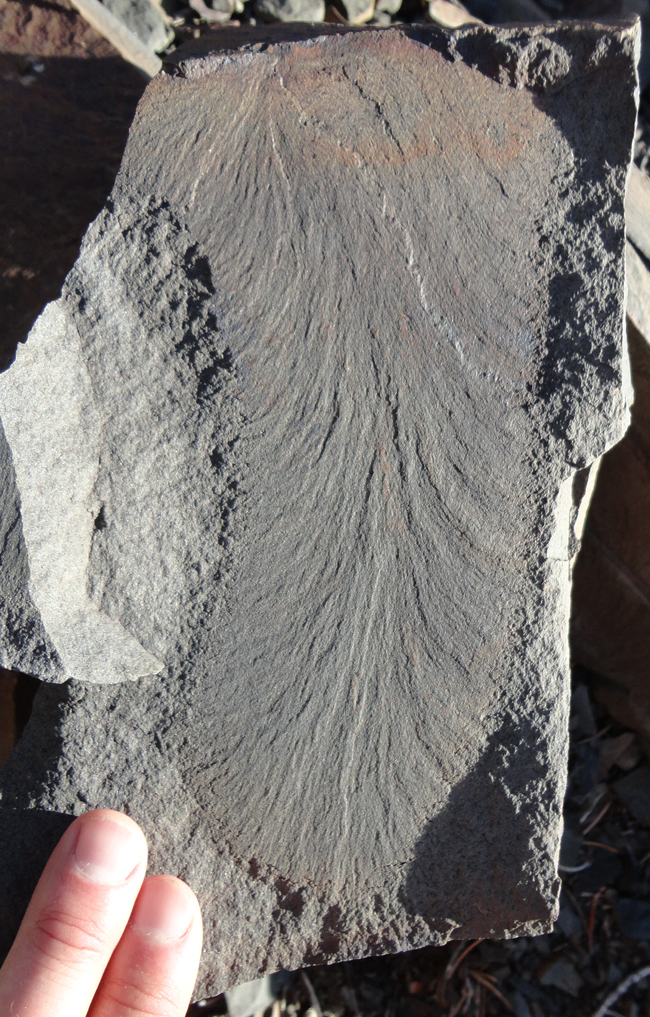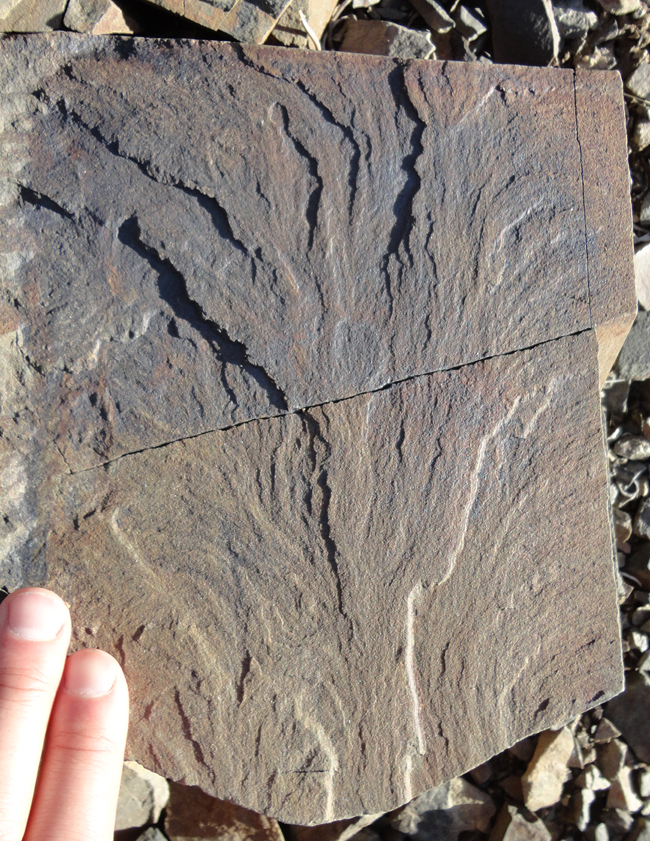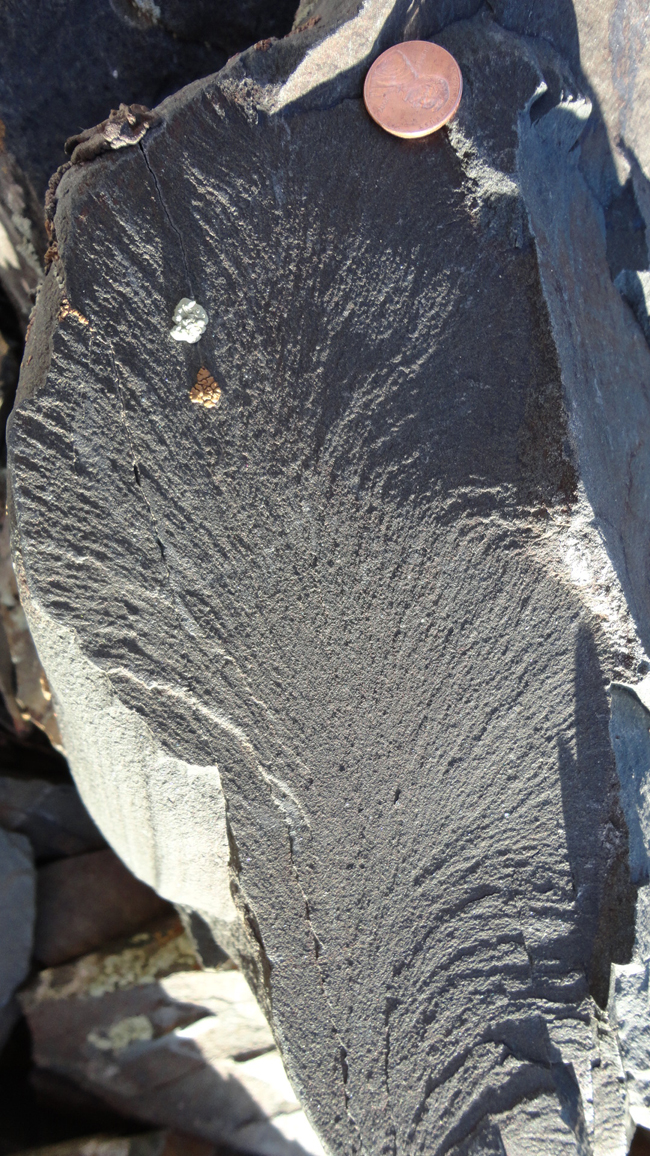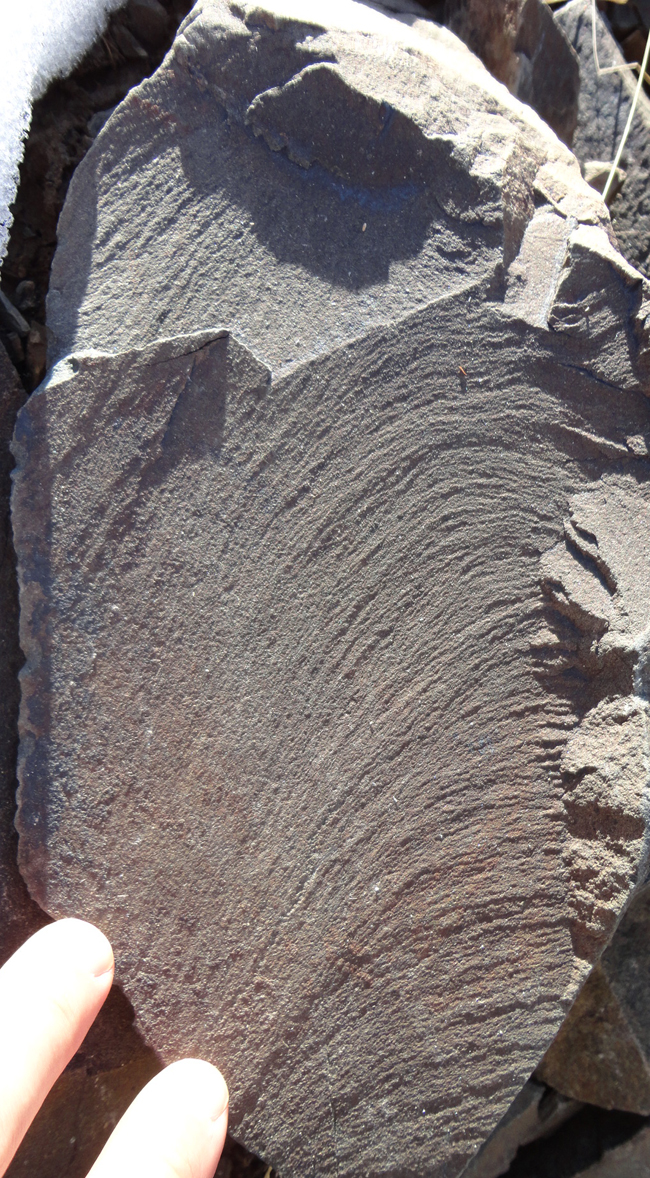On Monday, my field course students and I tried to find the Poleta folds, but I had failed to figure out in advance the best access point. Oops. That’s the way the cookie crumbles, when you’ve got big plans but not enough time to enact them with appropriate pre-planning.
We had some happy exploration of the hills south of Route 168, though, and found tons of blocks of the Cambrian-aged Poleta Formation bearing lovely plumose structure on joint faces. Here’s four of the best:




Gorgeous, eh?

Very detailed photos of this rock formation, great example of crustal folding. Its always great seeing landforms and geological structures for real in the field. I have a site where I publish my weather and astronomical images. I also publish interesting landform photos that I have seen on my travels.
Access in that area is from rough dirt roads leaving Deep Springs dry lake and leading up the wash that drains eastward from the formation. There is also a connecting dirt road that goes over to 168 so that you dont have to drive to the lake and then bast westward. None of it is marked in any particular way (which is typical for dirt roads out there).
Here is the turn off from 168. http://maps.google.com/?ll=37.318844,-118.093243&spn=0.046962,0.154324&t=m&z=13&layer=c&cbll=37.318502,-118.091522&panoid=iLi4YpVIx8dPMr8wcILH_w&cbp=12,184.2,,0,12.21
Now, that’s useful.
Indeed it is. Now we know. I should have sorted this out in advance – sorry we didn’t get to see it out there, Filip!!
Great “pocket” plumose samples! Is it quartzite?
Quartzite or argillite. Both were present.
This post reminds me of the first time I read your blog years ago as I searched for explanations of what I had seen while hiking in the Eastern Sierra. Thanks to you, I now shout things like “Hey, a plumose structure!” while hiking…and my favorite home-made cussword is hingefrackles.
That’s great. “Hingefrackles!!” 🙂